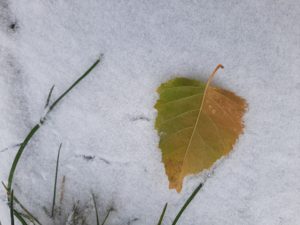I was fortunate to be able to attend the C2C conference this past Friday. One of the most influential sessions that I got to participate in was the “How Do We Know” taking place-based learning outside.
The learning:
The first thing that was highlighted during this session was the importance of creating core routines to make learning outside productive. I feel like we have all experienced teachers trying to take students outside with a specific goal, but because the students were not use to it or did not have all their instructions, yet the kids went crazy. The routine that the leaders laid:
- Land acknowledgement – Connecting students to the place they are in and bringing attention to was here before.
- Remind students of the purpose of the excursion and set up the boundaries and expectations.
- Utilize all the senses.
- Pre-teaching – Highlights the intent or purpose of the excursion, and the reason it is best done outside the classroom.
- Debriefing – what did they learn from the excursion and why is it important
- Risk Assessment – Either created by the teacher or with the help of students as well.
I found this was a useful list, as I have never tried to take students outside. However, I feel like I it would be easy to forget to do all of these things. What stood out to me the most, or what I will take forward is the importance of the pre-teachings. I think this resonates to me because I was one of those students who liked to stay inside and would be always wondering why we are bothering to go outside. So, I think it is important to explain the reason for the activity being outside. I would also like to highlight the mental health aspects of going outside. I haven’t researched into the effects of being in nature, but I felt it when I started taking walks during the pandemic, and it is a practice that I have made a daily necessity.
The activity:

The activity that we did in this session was to go outside and find evidence of autumn or winter. Using what ever means you want, including taking examples, samples, or pictures, video etc.
The leaders explained that even this simple of an activity can hit on many different curricular competencies depending on what kind of pre-teaching and debriefing that you give the class. For example, this activity can meet competencies including scientific method, scientific inquiry, interpreting local environment, assessment of qualitative and quantitative data, experiencing and interpreting local environment, and even conservation.
The assessment:
Lastly, they showed us some examples of how to assess this assignment.
- 4-point quantitative scale based on the number of observations that students brought back to class.
- 4-point qualitative scale ranked based on student’s quality, depth of description and observations.
- Single point scale where students rank their effort and quality of data based on examples set out by the teach
However, they emphasized that there was no specific way to assess this activity. It could have fallen under either formative or summative depending on the intent behind the lesson and where it fell within the unit or semester. .
Personally, I feel like activities similar would be a formative activity because adding time limitation and a grade may take away to the experience. Whereas, I would like students to engage in using all of their senses to explore the world, and find their evidence. For example, referring back to Dr. Pink’s video on motivation, when motivation is reward based people usually preform worse to the task, and for some reason it shuts down creativity. So, making it a summative assessment may inhibit the students ability to perceive the world in the same way.
On the other hand, the way I would approach summative activities would be with a more controlled way or with a backup plan, so if they didn’t find something they could still complete the rest of it. Some examples that my break out group thought of that I plan on using in the future was thin layer chromatography with leaf extracts to examine pigments, and making mushroom prints on paper and then examining their spores with the microscope. These can have a planned back up where there are samples that the students can use that I already had collected.
Overall this was a very instructive and thought provoking session!
